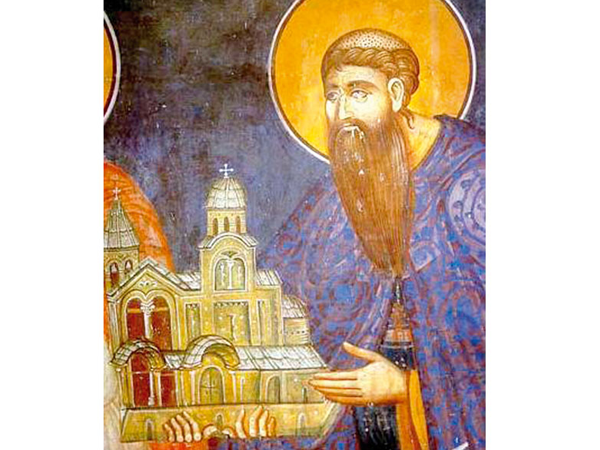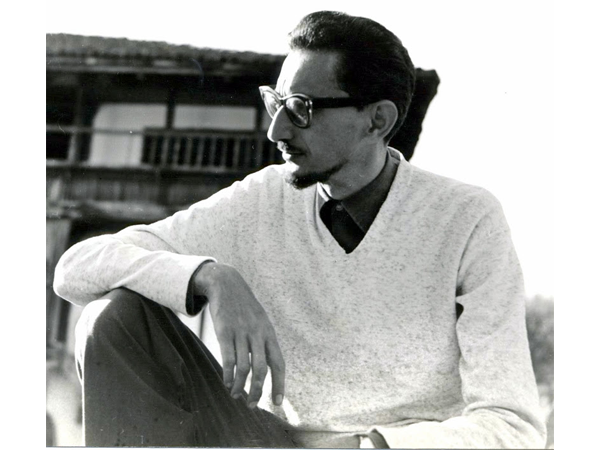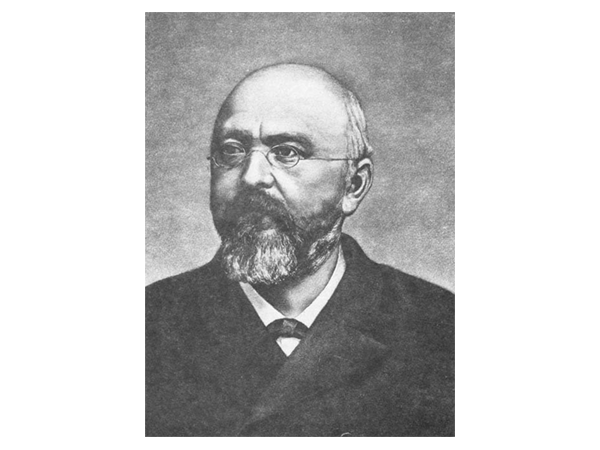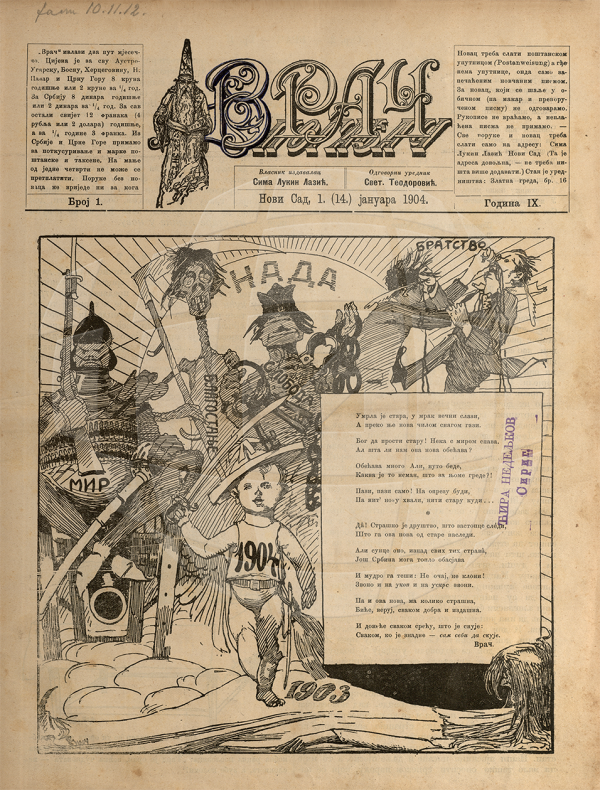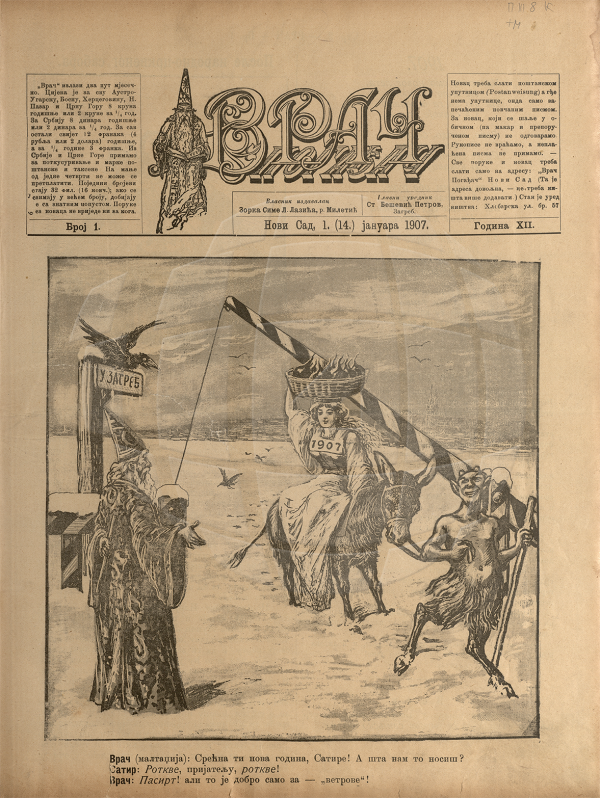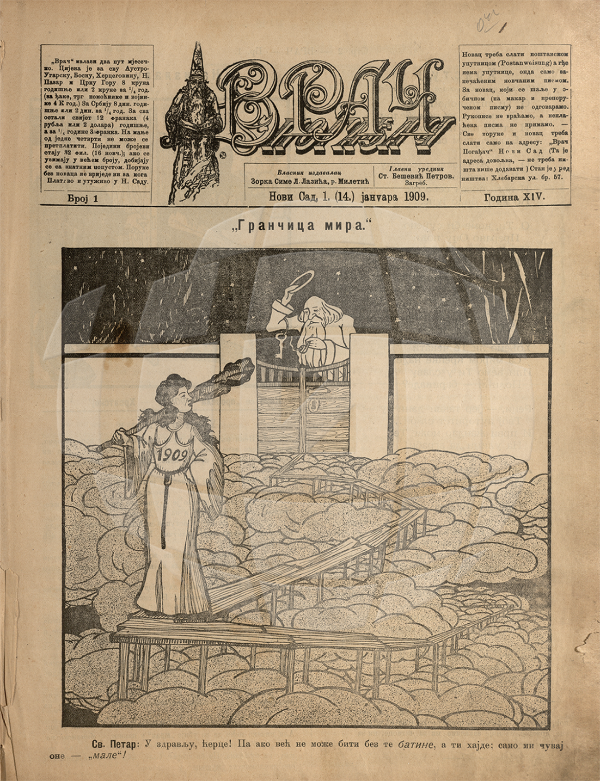
(exact date of birth and time of death are not defined)
He was a monk at the Hilandar Monastery and a contemporary of St. Sava. In fact, he accompanied St. Sava when the latter visited the Holy Land. He was much respected by the royal court in Raška, as well as by the monks on the Holy Mount, better known as Mount Athos. Teodor's account of his troubles, recorded on the pages of John Exarch's Hexameron (Šestodnev), which Teodor was copying at Domentijan's request, contains many references concerning Domentijan and his character.
Hieromonk Domentijan started his monastic life in Sava's monastery Žiča. Undoubtedly an exemplary monk, he was subsequently sent by the court to join Sava in Hilandar. It was there that Sava asked Domentijan to accompany him on his second pilgrimage to Jerusalem.
Domentijan's biography of St. Sava, written c. 1253 (and an earlier one of St. Simeon Nemanja) was expressly written by order of the royal court of Uroš I of Raška, seven years after Sava's death. It is a work giving an account of St. Sava's life, yet it is also an apotheosis of monasticism. Domentijan's style is characterized by fluent narration, panegyric diction, abundance of theological and mystical elements with an emphasis on a spiritual and clearly monastic point of view. Domentijan wrote it in Karyes (Athos), capital of the Mount Athos monastic community, in the kellion (cell) built by Saint Sava.
For his biography of St. Simeon, Domentijan used material from works of previous authors. He drew freely from Stefan the First-Crowned's biography of Stefan Nemanja; one third of his own biography of St. Sava; and in the Panegyric to St. Simon, he used a few lines from Ilarion's Panegyric to St. Vladimir.
It may be concluded that Domentijan was essentially a hymnologist who wrote biographies to two Serbian saints but, in fact, glorified monasticism and Christianity.

